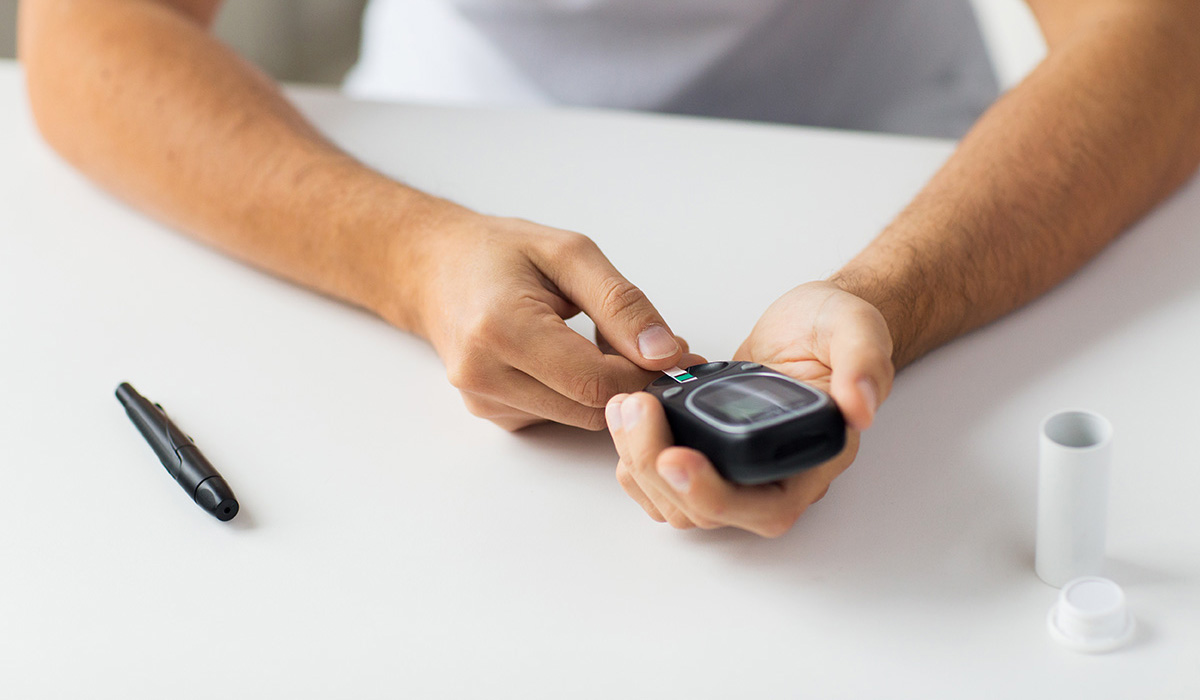November 2023
According to the American Diabetes Association (ADA), approximately 1.4 million Americans are diagnosed with diabetes each year. Nearly 6% of those newly diagnosed patients will have type 1 diabetes, an autoimmune disorder where the body attacks the cells that make insulin, a special hormone that helps to convert the carbohydrates from food into energy. Individuals diagnosed with type 1 diabetes will have to take insulin for the rest of their lives.
The other 94% of new diabetes diagnoses will be type 2 diabetes. With type 2 diabetes, your body still makes insulin, but it either makes too little of the hormone or your body becomes resistant to its effects. Unlike type 1 diabetes, it is possible to prevent or delay the development of type 2 diabetes with some key lifestyle changes.
Diabetes is a chronic health issue that can lead to serious medical complications ranging from heart disease to nerve damage. That’s why it’s so important to understand the risk factors underlying both type 1 and type 2 diabetes. If you know you’re at risk, you can make choices that reduce your risk. And if you do develop it, you’ll be better able to help your doctor accurately diagnose you, which means you’ll receive effective treatment sooner.
Risk Factors for Type 1 Diabetes
According to the Centers for Disease Control and Prevention (CDC), physicians and scientists aren’t sure what sets off the immune reaction that results in type 1 diabetes. There may be genetic factors at play — but scientists have not determined which specific genes are involved.
That said, some of the known risk factors for type 1 diabetes include:
Age. While you can develop type 1 diabetes at any age, it typically starts in childhood or adolescence. That’s why type 1 diabetes used to be called juvenile diabetes.
Sex. Males are more likely to have type 1 diabetes than females — 64% to 46%. Researchers are not sure why males are more at risk.
Family history. Because of the likely genetic component of type 1 diabetes, your family history is an important risk factor. If type 1 diabetes runs in your family — particularly if you have a parent or sibling who has it — you’re at much higher risk of developing it.
Unfortunately, there is no way to prevent type 1 diabetes. But by knowing the risk factors for this disease — and sharing them with your family physician — you’re more likely to be correctly diagnosed early so you can start the life-saving treatment you need.
Risk Factors for Type 2 Diabetes
More than 30 million Americans live with type 2 diabetes. It’s possible to delay or even prevent the onset of the disease. The known risk factors for type 2 diabetes include:
Age. Most people are diagnosed with type 2 diabetes at 45 years of age or older. However, the CDC has noted a growing surge in this disease in younger individuals.
Sex. Like type 1 diabetes, males are at a slightly higher risk of developing type 2 diabetes. Women who have had gestational diabetes or have given birth to a baby weighing more than nine pounds are also at higher risk.
Weight and exercise. One of the biggest risk factors for type 2 diabetes is being overweight. Extra weight, even just an extra 10 or 15 pounds, can increase your risk of developing this condition. Leading a sedentary lifestyle (exercising less than three times per week) also adds to your risk profile. Men are more likely to develop type 2 diabetes at a lower weight than women.
Medical and family history. A family history of type 2 diabetes ups your own risk of developing the disease. So does a history of non-alcoholic fatty liver disease. Your family background matters, too. Studies show that people of African American, Hispanic or Latino, or Native American ethnicity are at higher risk of developing the disease.
Prediabetes. Many people diagnosed with type 2 diabetes show symptoms before developing the full-blown disease. If your blood glucose levels are higher than normal — not quite to diabetes level but higher than normal range — you have a condition called prediabetes. It’s your warning sign that it’s time to make some healthy changes to your diet and exercise regimen so you can avoid or delay developing type 2 diabetes.



